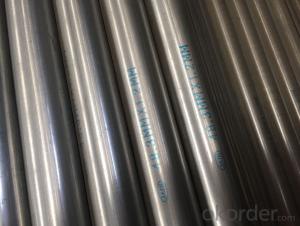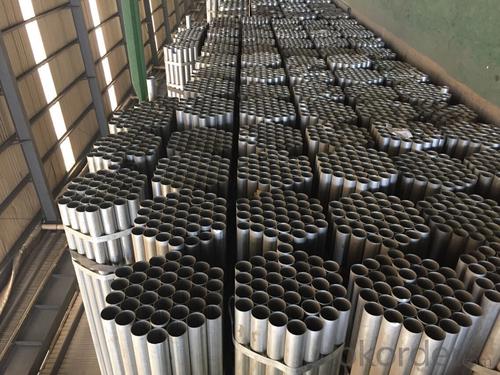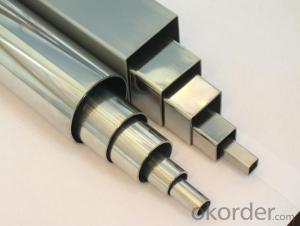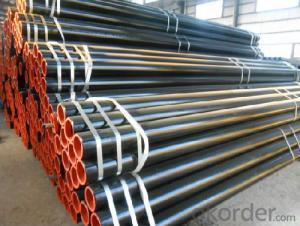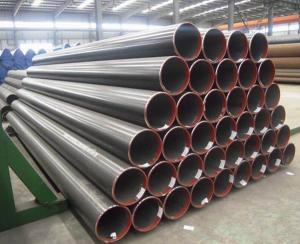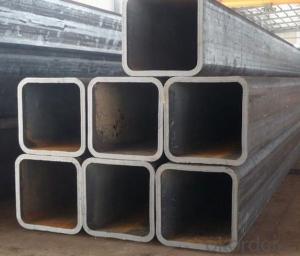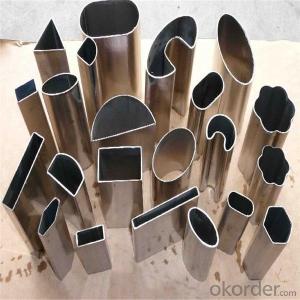Various types of stainless steel pipe waiting for you
- Loading Port:
- Tianjin
- Payment Terms:
- TT OR LC
- Min Order Qty:
- 30 m.t.
- Supply Capability:
- 8000 m.t./month
OKorder Service Pledge
OKorder Financial Service
You Might Also Like
Product Description:
1、Structure of Stainless Steel Welded Pipe ASTM A358/A312/A778 Description:
Stainless steel welded pipe is actually a cover term, covering a wide range of alloy and making them suitable for different attributes that are used in a very wide and large numbers of different industries. Stainless steel pipe is resistant to erosion, highly flexible, powerful, easy to use, and can be done in distinct approaches, which means that more and more stainless steel was used as a construction material for large-scale, high impact buildings. It can be molded, rolling, and it can create amazing shapes to make it perfect, It is used as experimental buildings, The use of steel pipe welding of large stainless steel covers other examples.
2、Main Features of the Stainless Steel Welded Pipe ASTM A358/A312/A778:
• High manufacturing accuracy
• High strength
• Small inertia resistance
• Strong heat dissipation ability
• Good visual effect
•Reasonable price
3、Stainless Steel Welded Pipe ASTM A358/A312/A778 Images:

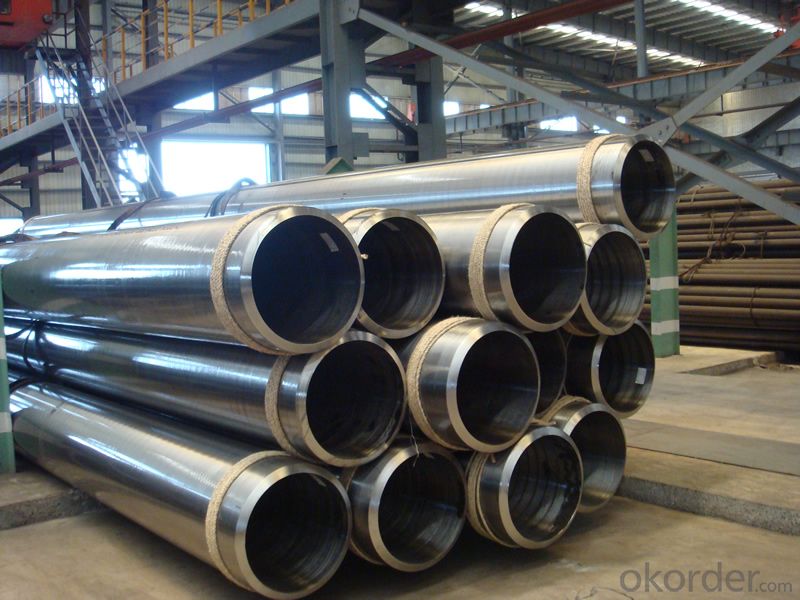
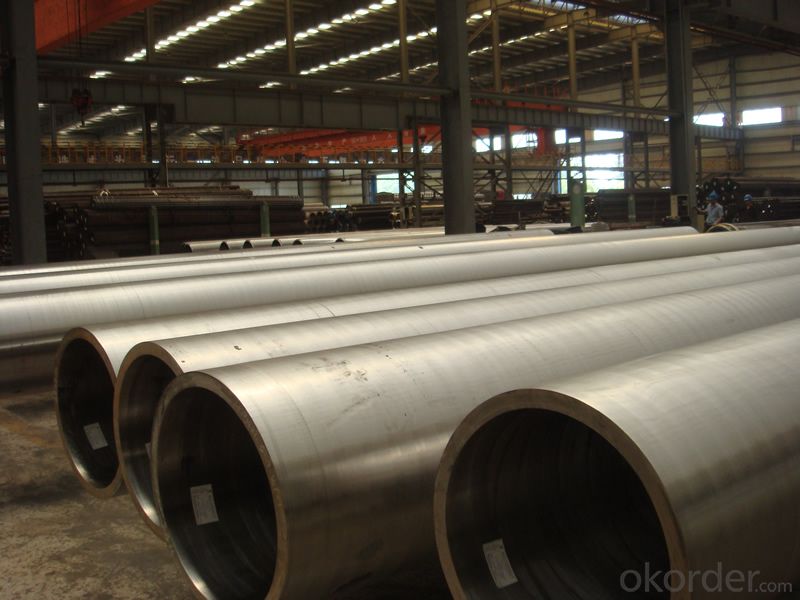
4、Stainless Steel Welded Pipe ASTM A358/A312/A778 Specification:
Size:
| Outside diameter | Outside | Thickness | ||||
| SCH 5S | SCH 10S | SCH 20S | SCH 40S | |||
| (A) | (B) | mm | mm | mm | mm | mm |
| 350 | 14′ | 355.6 | 3.96 | 4.78 | 7.92 | 11.13 |
| 400 | 16′ | 406.4 | 4.19 | 4.78 | 7.92 | 12.7 |
| 450 | 18′ | 457.2 | 4.19 | 4.78 | 7.92 | 14.27 |
| 500 | 20′ | 508.0 | 4.78 | 5.54 | 9.53 | 15.09 |
| 550 | 22′ | 558.8 | 4.78 | 5.54 | 9.53 | 15.09 |
| 600 | 24′ | 609.6 | 5.54 | 6.35 | 9.53 | 17.48 |
| 650 | 26′ | 660.4 | 5.54 | 7.92 | 12.7 | 17.48 |
| 700 | 28′ | 711.2 | 5.54 | 7.92 | 12.7 | 17.48 |
| 750 | 30′ | 762.0 | 6.35 | 7.92 | 12.7 | 17.48 |
| 800 | 32′ | 812.8 | 7.90 | 12.7 | 17.48 | |
| 850 | 34 | 863.6 | 7.92 | 12.7 | 17.48 | |
| 900 | 36′ | 914.4 | 7.92 | 12.7 | 19.05 | |
| 1000 | 40′ | 1016.0 | 9.53 | |||
Tolerances on dimensions table:
| Standard | Outside(mm) | Thickness(mm) | Length(mm) | |
| ASTM A312 | ≤48.26 | +0.40 -0.80 | +No special provisions(Unspecified)-12.50% | Appoint LengthDefinite cut length+6.40 -0 |
| >48.26~114.30 | +0.80 -0.80 | |||
| >114.30~219.08 | +1.60 -0.80 | |||
| >219.08~457.20 | +2.40 -0.80 | |||
| >457~660 | +3.20/-0.80 | |||
| >660~864 | +4.00/-0.80 | |||
| >864~1219 | +4.48/-0.80 | |||
| JIS G3459 | <30.00 ±0.30≥30.00 ±1.00% | <2.00 ±0.20≥2.00 ±10% | Appoint LengthDefinite cut Length | |
| GB/T 12771 | <13.00 ±0.2013.00~40.00 ±0.30≥40.00 ±0.80% | ≤4.00 +0.50 -0.60>4.00 ±10% | +20.00-0 | |
| EN 10217-7 | D1±1.50% with±0.75mm(min)D2±1.00% with±0.50mm(min)D3±0.75% with±0.30mm(min) D4±0.5% with±0.10mm(min) | T1±15.00% with±0.60mm(min)T2±12.5% with±0.40mm(min)T3±10.00% with±0.20mm(min) T4±7.50% with±0.15mm(min) T5±5.00% with±0.10mm(min) EN ISO 1127 | ≤6000 +5.00 -06000~12000 +10.00 -0 | |
5、FAQ of Stainless Steel Welded Pipe ASTM A358/A312/A778:
①How is the quality of your products?
Our products are manufactured strictly according to national and internaional standard, and we take a test on every pipe before delivered out. If you want see our quality certifications and all kinds of testing report, please just ask us for it.
Guaranteed: If products’ quality don’t accord to discription as we give or the promise before you place order, we promise 100% refund.
②How about price?
Yes, we are factory and be able to give you lowest price below market one, and we have a policy that “ for saving time and absolutely honest business attitude, we quote as lowest as possible for any customer, and discount can be given according to quantity”,if you like bargain and factory price is not low enough as you think, just don’t waste your time.Please trust the quotation we would give you, it is professional one.
③Why should you chose us?
Chose happens because of quality, then price, We can give you both.Additionally, we can also offer professional products inquiry, products knowledge train(for agents), smooth goods delivery, exellent customer solution proposals.Our service formula: good quality+good price+good service=customer’s trust
SGS test is available, customer inspection before shipping is welcome, third party inspection is no problem.
Any question, pls feel free to contact us !
- Q: What are the different types of stainless steel pipe bends?
- There are several different types of stainless steel pipe bends, including 45-degree, 90-degree, and 180-degree bends. Additionally, there are short radius and long radius bends, as well as U-bends and J-bends. These variations allow for flexibility in designing and connecting stainless steel piping systems to fit specific needs and spatial constraints.
- Q: Can stainless steel pipes be used for exhaust systems?
- Yes, stainless steel pipes can be used for exhaust systems. They are commonly used due to their excellent corrosion resistance, high temperature tolerance, and durability. Stainless steel pipes can withstand the harsh conditions of exhaust gases and provide a long-lasting and efficient solution for exhaust systems.
- Q: How do stainless steel pipes compare to fiberglass-reinforced pipes?
- Stainless steel pipes are known for their superior strength and durability compared to fiberglass-reinforced pipes. While fiberglass-reinforced pipes offer corrosion resistance and are lighter in weight, stainless steel pipes excel in handling high temperatures, pressures, and heavy loads. They are also more resistant to impact and abrasion, making them ideal for harsh environments and industries such as oil and gas, chemical processing, and construction. Overall, stainless steel pipes are a reliable and long-lasting option with excellent mechanical properties, whereas fiberglass-reinforced pipes have their advantages in certain applications.
- Q: What is the difference between 316 and 316LN stainless steel pipes?
- The main difference between 316 and 316LN stainless steel pipes lies in their nitrogen content. 316LN stainless steel pipes have a higher nitrogen content, which enhances their resistance to corrosion and improves their strength and toughness. This makes 316LN stainless steel pipes suitable for applications in more demanding environments, such as those involving high temperatures and aggressive chemicals.
- Q: What is the difference between 316 and 316H stainless steel pipes?
- The primary distinction between 316 and 316H stainless steel pipes lies in their carbon composition. In the case of 316 stainless steel pipes, their maximum carbon content is 0.08%, rendering them ideal for situations where corrosion resistance is crucial, such as marine environments. Furthermore, they are renowned for their outstanding welding and forming abilities, leading to their popularity across various industries. Conversely, 316H stainless steel pipes contain a higher carbon content, typically ranging from 0.04 to 0.10%. This increased carbon composition enhances their strength and resistance to deformation at high temperatures, making them suitable for applications involving elevated temperatures, such as high-pressure steam systems or the petrochemical industry. Overall, both 316 and 316H stainless steel pipes exhibit satisfactory corrosion resistance and performance. However, the 316H variant is specifically engineered to withstand higher temperatures and possess superior strength properties.
- Q: The difference between stainless steel pipe and stainless steel composite pipe
- Stainless steel pipe is a kind of hollow long strip round steel, mainly used in petroleum, chemical, medical, food, light industry, machinery, instrument and other industrial pipeline and mechanical structure parts. In addition, the bending and torsional strength of the same weight is lighter, so it is also widely used in the manufacture of mechanical parts and engineering structures. It is also used to produce all kinds of conventional weapons, guns, shells and so on.
- Q: Are stainless steel pipes resistant to fire?
- Yes, stainless steel pipes are highly resistant to fire. Stainless steel is known for its excellent heat resistance properties, making it a suitable material for applications where high temperatures are present. When exposed to fire, stainless steel pipes retain their strength and structural integrity, minimizing the risk of collapse or failure. This resistance to fire is due to the high melting point of stainless steel, which can withstand temperatures well above those typically reached in fires. Additionally, stainless steel does not contribute to the spread of flames, making it a safe choice for fire protection and containment systems.
- Q: Can stainless steel pipes be embossed?
- Yes, stainless steel pipes can be embossed.
- Q: What's the difference between stainless steel decorative pipes and polished stainless steel pipes?
- Stainless steel decorative tubes are mainly used for decoration, such as railings, staircases, hand guards, railings, windows and so on, the wall thickness is very thin,Polished stainless steel pipe is not the same, the industry can also be used, that is, just made out, some rough, not smooth, so polished under the smooth, according to customer needs.
- Q: What is the difference between 201 and 316 stainless steel pipes?
- The main difference between 201 and 316 stainless steel pipes lies in their chemical composition and respective properties. 201 stainless steel is a lower grade of stainless steel compared to 316. It contains a higher amount of manganese and nitrogen, which gives it improved strength and corrosion resistance compared to other lower grade stainless steels. However, it is not as durable as 316 stainless steel and is more prone to corrosion and rusting. On the other hand, 316 stainless steel is a high-quality grade that contains a higher percentage of chromium and nickel. These elements enhance its corrosion resistance, making it highly resistant to pitting and crevice corrosion, especially in chloride environments. 316 stainless steel pipes are also more resistant to high temperatures and have superior strength compared to 201 stainless steel pipes. Therefore, 316 stainless steel pipes are widely used in industries with demanding requirements such as marine, chemical, and medical sectors, where corrosion resistance and durability are crucial. 201 stainless steel pipes, while suitable for general applications, are more commonly used in less demanding environments where cost-effectiveness is a priority.
Send your message to us
Various types of stainless steel pipe waiting for you
- Loading Port:
- Tianjin
- Payment Terms:
- TT OR LC
- Min Order Qty:
- 30 m.t.
- Supply Capability:
- 8000 m.t./month
OKorder Service Pledge
OKorder Financial Service
Similar products
Hot products
Hot Searches
Related keywords

